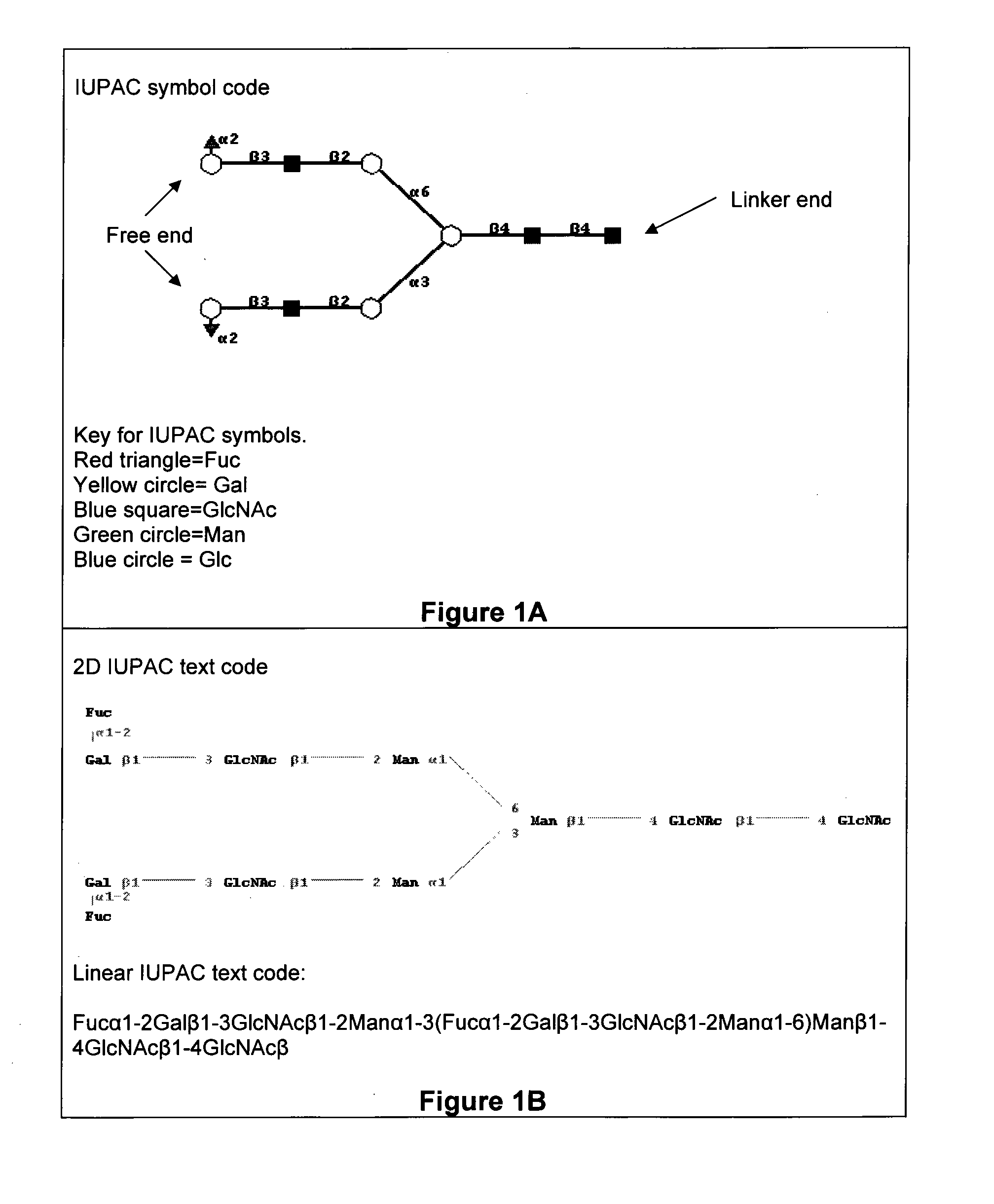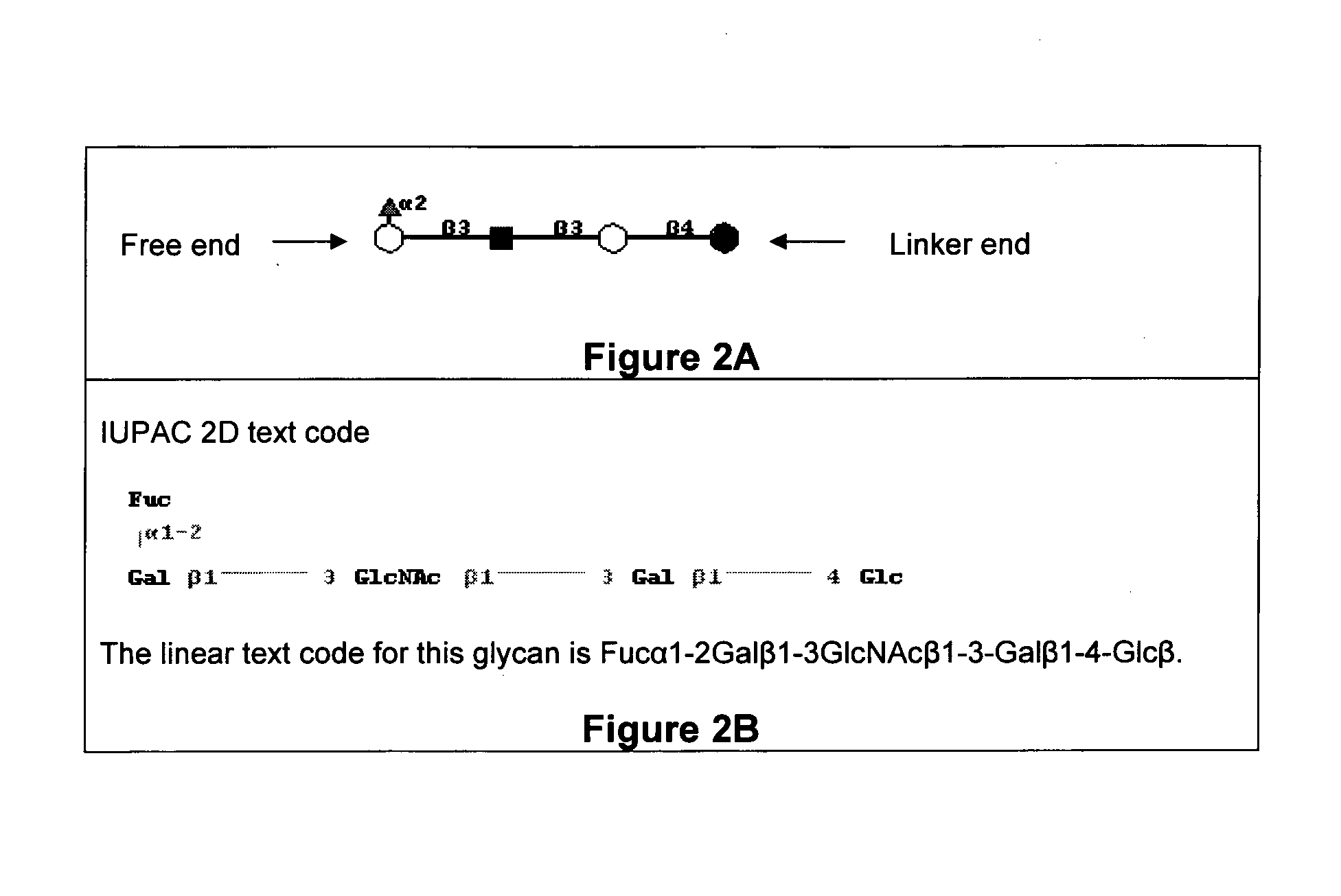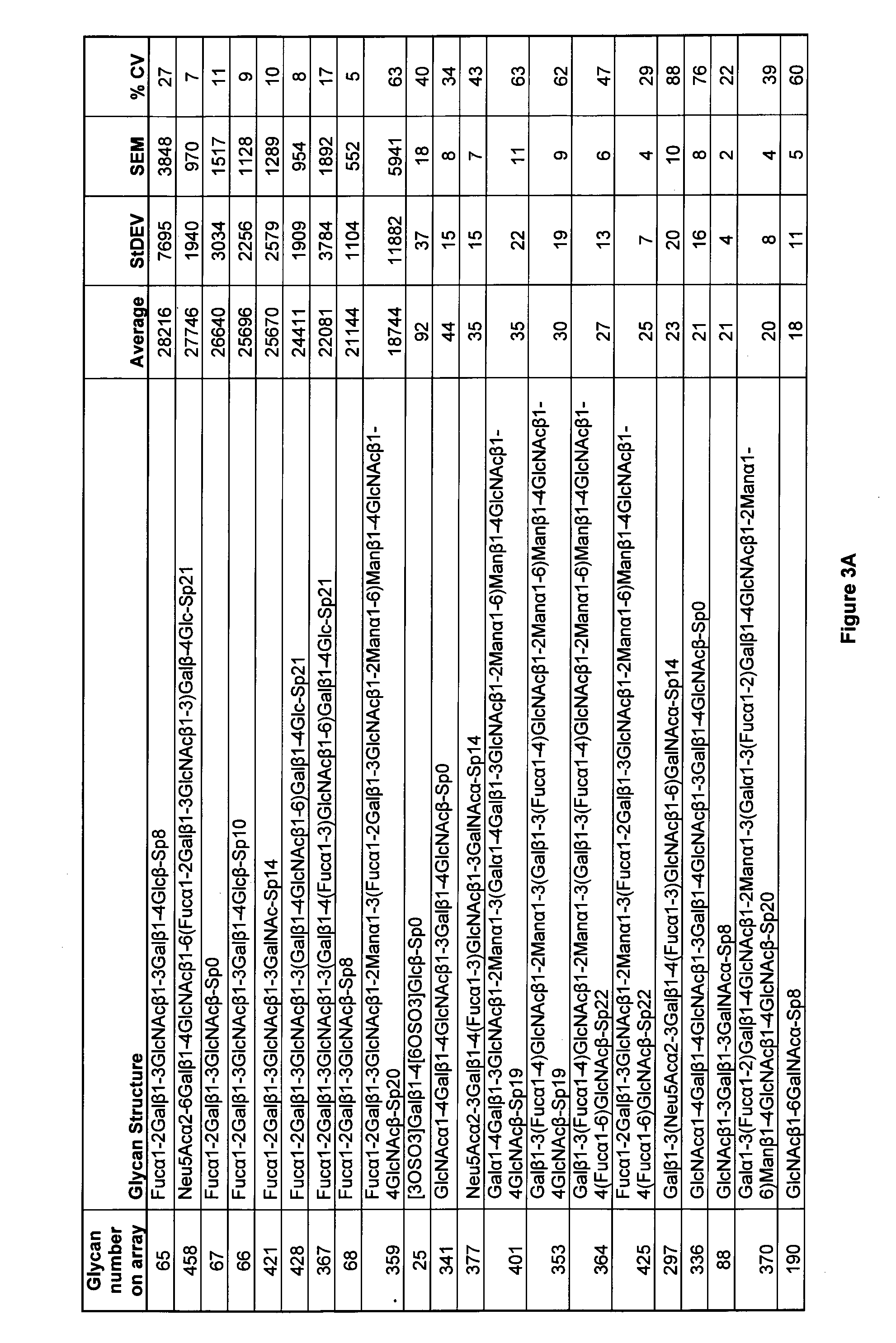Methods for identifying candidate cytotoxic antibody molecules
a technology of cytotoxic antibody and antibody molecules, which is applied in the field of screening candidate antibody molecules, can solve the problems of limited use of embryonic stem cells in medicin
- Summary
- Abstract
- Description
- Claims
- Application Information
AI Technical Summary
Benefits of technology
Problems solved by technology
Method used
Image
Examples
example 1
[0432]The inventors have discovered that mAb 84 does not bind to:[0433]unglycosylated PODXL (in vitro transcription and translation (TnT))[0434]PODXL over-expressed in HEK and COS cells
[0435]The gene encoding PODXL was isolated and sequenced from hESC. The gene was cloned into vectors and expressed either unglycosylated (in vitro TnT) or in mammalian cells (HEK or COS cells which are capable of glycosylating the expressed protein).
[0436]The proteins obtained were then resolved on SDS-PAGE, Western blotted and probed with antibodies. The antibodies used were commercially available anti-PODXL antibodies (monoclonal and polyclonal) and mAb 84. For in vitro TnT-expressed PODXL, it was found that only the polyclonal anti-PODXL detected a band of ˜55 kDa which corresponds to the molecular weight (MW) of unglycosylated PODXL. Monoclocal anti-PODXL and mAb84 did not detect the unglycosylated PODXL. For COS and HEK expressed PODXL, only monoclonal anti-PODXL detected both the expressed PODXL...
example 2
[0438]Cytotoxic mAb84 antibodies selectively bind to glycans comprising Fucα1-2Galβ1-3GlcNAc residues in a glycan array.
[0439]The cytotoxic antibody mAb84 was tested for binding with 465 different glycans in V4.1 of the Printed Glycan Array (Consortium for Functional Glycomics) using the protocol described above.
[0440]Briefly, antibodies were diluted 1:100 to 10 μg / ml in binding buffer contacted with the glycan array and detected with Alexa488 labeled anti-mouse IgM (Invitrogen, A21042). The array was washed to remove unbound antibodies. The array was contacted with a labelled secondary antibody, which was able to bind to mAb84 antibodies. The labelled secondary antibody was then detected and quantified. mAb84 antibodies were found to selectively bind to glycans containing Fucα1-2Galβ1-3GlcNAc residues. Without being bound by theory, we believe that the mAb84 antibody is specific for the Fucα1-2Galβ1-3GlcNAc residues in these glycans.
[0441]The full list of glycans tested for binding...
example 3
[0442]Non-cytotoxic mAb85 antibodies have the same glycan specificity as mAb84, but a much lower affinity for these glycans.
[0443]Non-cytotoxic mAb85 antibodies were tested for binding with 465 glycans in V4.1 of the Printed Glycan Array (Consortium for Functional Glycomics) using the protocol described above. This was the same type of array used to test mAb84 antibodies as described in Example 3. mAb85 antibodies were found to bind similar glycans to mAb84 antibodies. In particular, mAb85 bound to glycans comprising Fucα1-2Galβ1-3GlcNAc. However, binding between mAb85 and glycans comprising Fucα1-2Galβ1-3GlcNAc was found to be significantly lower than the binding between cytotoxic mAb84 to the same glycans.
[0444]The full list of glycans tested for binding with mAb85, and the binding of mAb85 to these glycans is shown in FIG. 4.
PUM
| Property | Measurement | Unit |
|---|---|---|
| molecular weight | aaaaa | aaaaa |
| Ka | aaaaa | aaaaa |
| cultivation volume | aaaaa | aaaaa |
Abstract
Description
Claims
Application Information
 Login to View More
Login to View More - R&D Engineer
- R&D Manager
- IP Professional
- Industry Leading Data Capabilities
- Powerful AI technology
- Patent DNA Extraction
Browse by: Latest US Patents, China's latest patents, Technical Efficacy Thesaurus, Application Domain, Technology Topic, Popular Technical Reports.
© 2024 PatSnap. All rights reserved.Legal|Privacy policy|Modern Slavery Act Transparency Statement|Sitemap|About US| Contact US: help@patsnap.com










